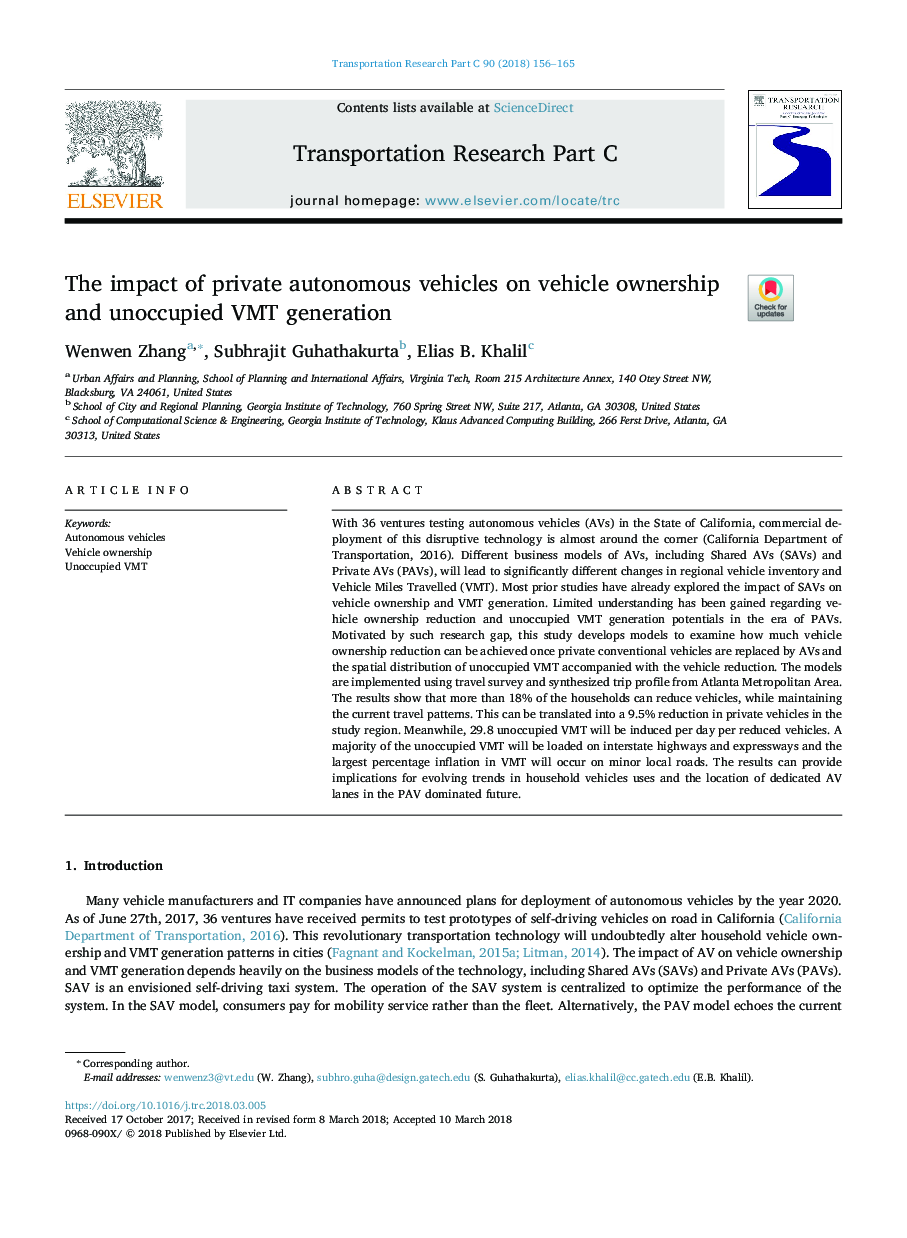| Article ID | Journal | Published Year | Pages | File Type |
|---|---|---|---|---|
| 6935983 | Transportation Research Part C: Emerging Technologies | 2018 | 10 Pages |
Abstract
With 36 ventures testing autonomous vehicles (AVs) in the State of California, commercial deployment of this disruptive technology is almost around the corner (California Department of Transportation, 2016). Different business models of AVs, including Shared AVs (SAVs) and Private AVs (PAVs), will lead to significantly different changes in regional vehicle inventory and Vehicle Miles Travelled (VMT). Most prior studies have already explored the impact of SAVs on vehicle ownership and VMT generation. Limited understanding has been gained regarding vehicle ownership reduction and unoccupied VMT generation potentials in the era of PAVs. Motivated by such research gap, this study develops models to examine how much vehicle ownership reduction can be achieved once private conventional vehicles are replaced by AVs and the spatial distribution of unoccupied VMT accompanied with the vehicle reduction. The models are implemented using travel survey and synthesized trip profile from Atlanta Metropolitan Area. The results show that more than 18% of the households can reduce vehicles, while maintaining the current travel patterns. This can be translated into a 9.5% reduction in private vehicles in the study region. Meanwhile, 29.8 unoccupied VMT will be induced per day per reduced vehicles. A majority of the unoccupied VMT will be loaded on interstate highways and expressways and the largest percentage inflation in VMT will occur on minor local roads. The results can provide implications for evolving trends in household vehicles uses and the location of dedicated AV lanes in the PAV dominated future.
Keywords
Related Topics
Physical Sciences and Engineering
Computer Science
Computer Science Applications
Authors
Wenwen Zhang, Subhrajit Guhathakurta, Elias B. Khalil,
